EQing your snare drums can be hard!
Whether you are EQing multiple layers of snare drums or a audio file, there are small details that you must pay attention to for your snare to come through in your mix.
In this article, we’re going to cover everything you need to know about EQing your snare drum
Understanding Snare Drum Frequencies

A typical snare drum has a frequency range that spans from around 100Hz to 10kHz.
Within this range, there are several key frequency bands that contribute to the overall character of the snare sound:
- Low-end (100Hz-250Hz): Responsible for the body and weight of the snare.
- Mid-range (250Hz-2kHz): Contains the fundamental tone and the “boxy” frequencies.
- Upper mid-range (2kHz-5kHz): Provides clarity, presence, and attack.
- High-end (5kHz-10kHz): Adds brightness, crispness, and sizzle to the snare.
Basic EQ Techniques for Snare Drums
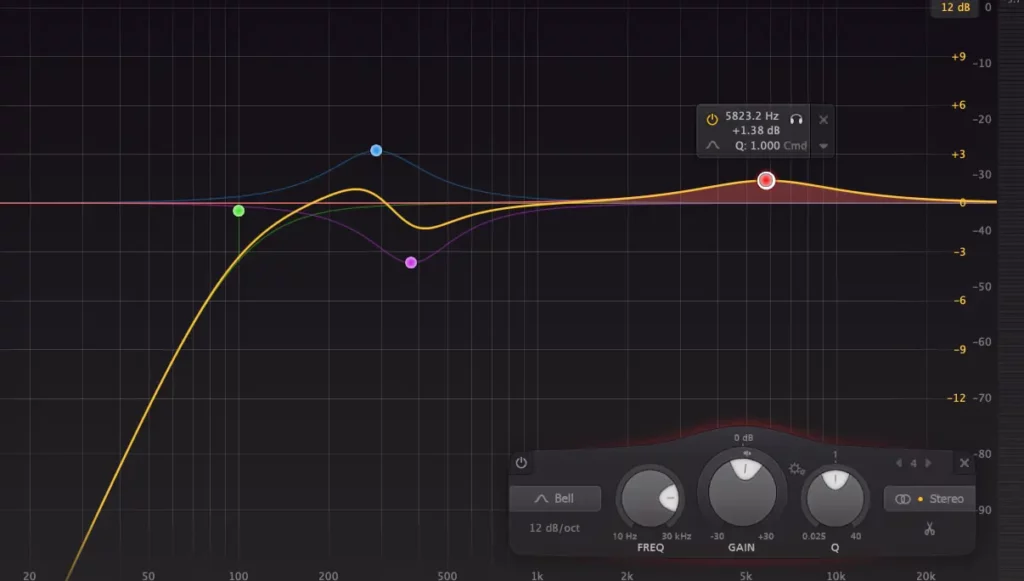
Here are three different frequency ranges that you’ll need to EQ:
- Enhance the fundamental tone of the snare: focus on the mid-range frequencies around 200Hz-500Hz. A gentle boost in this area can help bring out the snare’s core sound.
- Reduce boxiness and improve clarity: try cutting frequencies in the 200Hz-400Hz range. This can help eliminate muddy or hollow tones.
- Add brightness and crispness: experiment with boosting frequencies in the upper mid-range and high-end, typically around 4kHz-8kHz.
Different Types of EQs for EQing your Snares
Parametric EQs offer more precise control over the frequency spectrum compared to traditional shelving or peak filters.
They allow you to adjust the center frequency, gain, and bandwidth (Q) of each EQ band.
This level of precision is particularly useful for surgical EQ moves on the snare drum.
Dynamic EQ and multiband compression take things a step further by allowing you to apply EQ adjustments dynamically based on the input signal level.
This can be handy for taming excessive resonances or adding punch to the snare only when needed.
Mistakes to Avoid When EQing Your Snares

Over EQing
One common mistake is over-EQing the snare drum.
Excessive boosts or cuts can lead to an unnatural or processed sound.
It’s important to make subtle adjustments and rely on your ears to guide you.
Phase Cancellation
Another issue to be aware of is phase cancellation.
EQ adjustments can affect the phase relationship between the snare and other elements in the mix, leading to a thin or hollow sound.
To minimize phase issues, use linear-phase EQs or be mindful of the overall phase coherence when making EQ decisions.
EQing the Snare in Different Musical Contexts
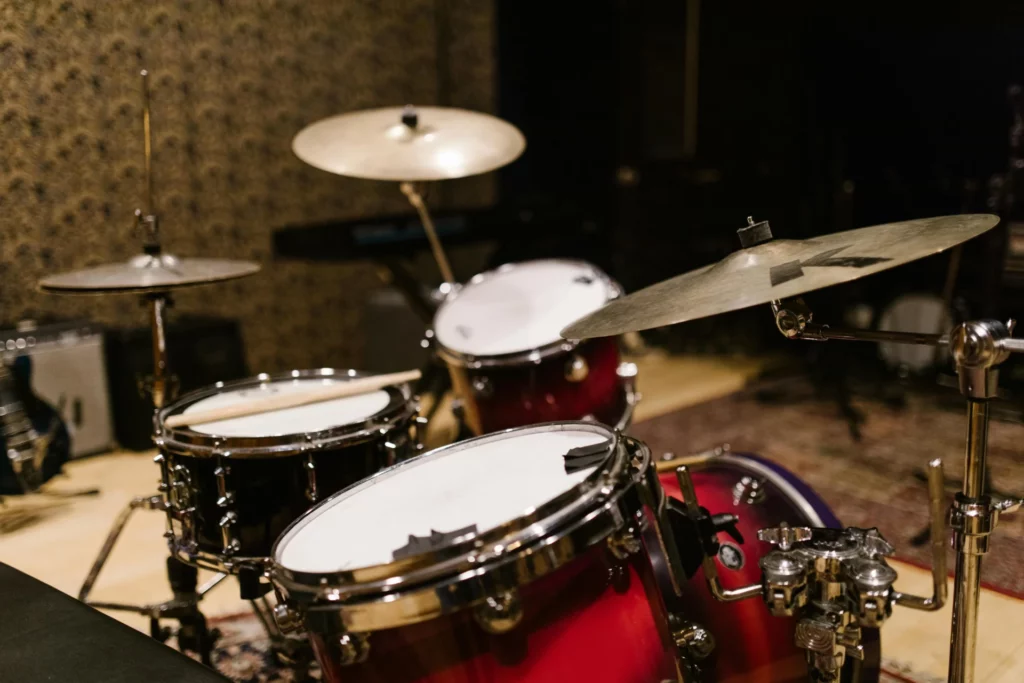
The approach to EQing a snare drum can vary depending on the musical genre and the desired sound.
Here are some general guidelines:
- Rock: Emphasize the mid-range punch and high-end crack for a powerful and cutting snare sound.
- Jazz: Focus on the low-end body and mid-range clarity for a warm and articulate snare tone.
- Electronic: Experiment with high-end boost and low-end reduction for a tight and crisp snare that cuts through the mix.
Analyzing the snare EQ settings in famous tracks can provide valuable insights and inspiration.
For example, the snare in “Billie Jean” by Michael Jackson has a distinct mid-range presence and a tight high-end, while the snare in “Welcome to the Jungle” by Guns N’ Roses has a more aggressive and scooped mid-range.
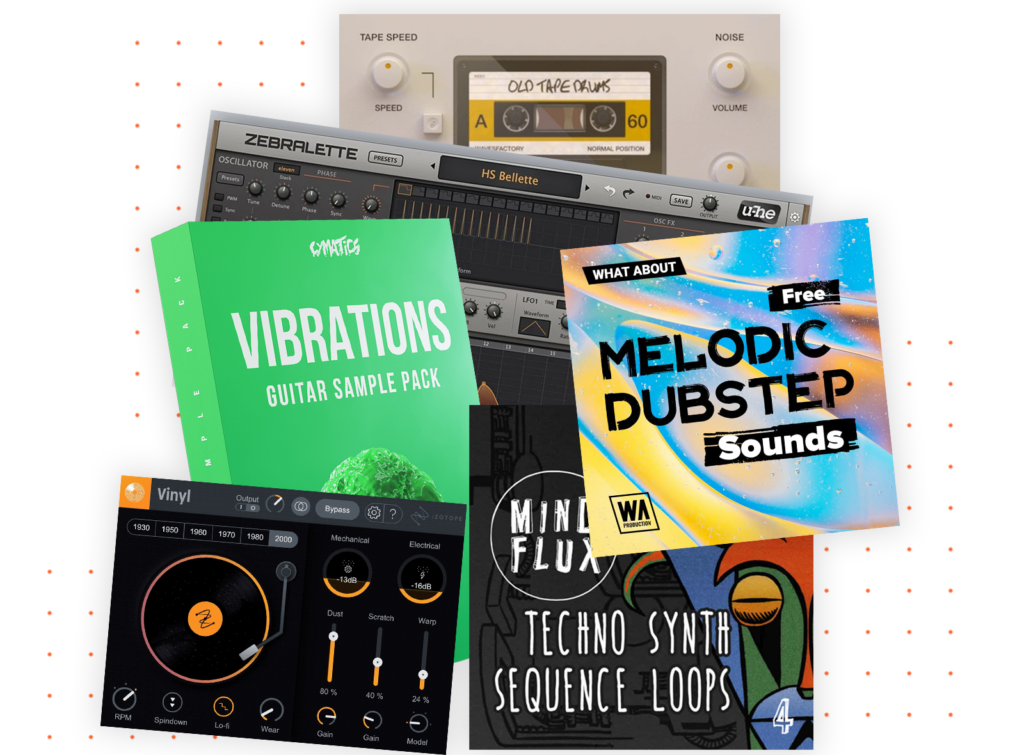
Access 4,000+ Music Tools
Access our entire library of music tools including sample packs, VST plugins, DAW templates, and much more.
Recommended EQ Plugins and Tools
There are numerous EQ plugins available in the market, each with its own unique features and flavor.
Some popular options for snare drum EQing include:
- IK Multimedia EQP-1A: A classic passive EQ emulation known for its smooth and musical sound.
- SSL E-Series Channel Strip: Offers a range of EQ options, including a parametric mid-range band and high/low shelving filters.
- FabFilter Pro-Q 3: A versatile and intuitive parametric EQ with dynamic EQ capabilities.
When choosing an EQ plugin, consider factors such as the user interface, workflow, and the specific tonal characteristics you’re looking for.
Practical Exercises to Improve Snare EQ Skills
To practice snare drum EQing, start by setting up a session with a raw snare recording.
Step By Step For EQing Your Snares
- Listen to the snare in solo and identify any problematic frequencies or areas that need enhancement. Follow the steps in the Basic EQ Techniques for Snare Drums section at the beginning of the article
- Use a parametric EQ to make small adjustments, focusing on one frequency band at a time.
- A/B the EQed snare with the original to assess the impact of your changes.
- Repeat the process, experimenting with different EQ settings and techniques.
How To Develop Critical Listening Skills for EQing your Snares
- Listen to a variety of snare drum recordings and analyze their frequency balance.
- Practice identifying and isolating specific frequency ranges using EQ sweeps.
- Compare the snare EQ settings in different musical contexts and genres.
EQing a snare drum is an art that requires practice, patience, and a keen ear.
By understanding the key frequency ranges, applying basic and advanced EQ techniques, and avoiding common mistakes, you can shape the snare sound to fit perfectly in your mix.
Access over 4,000+ Music Production Tools
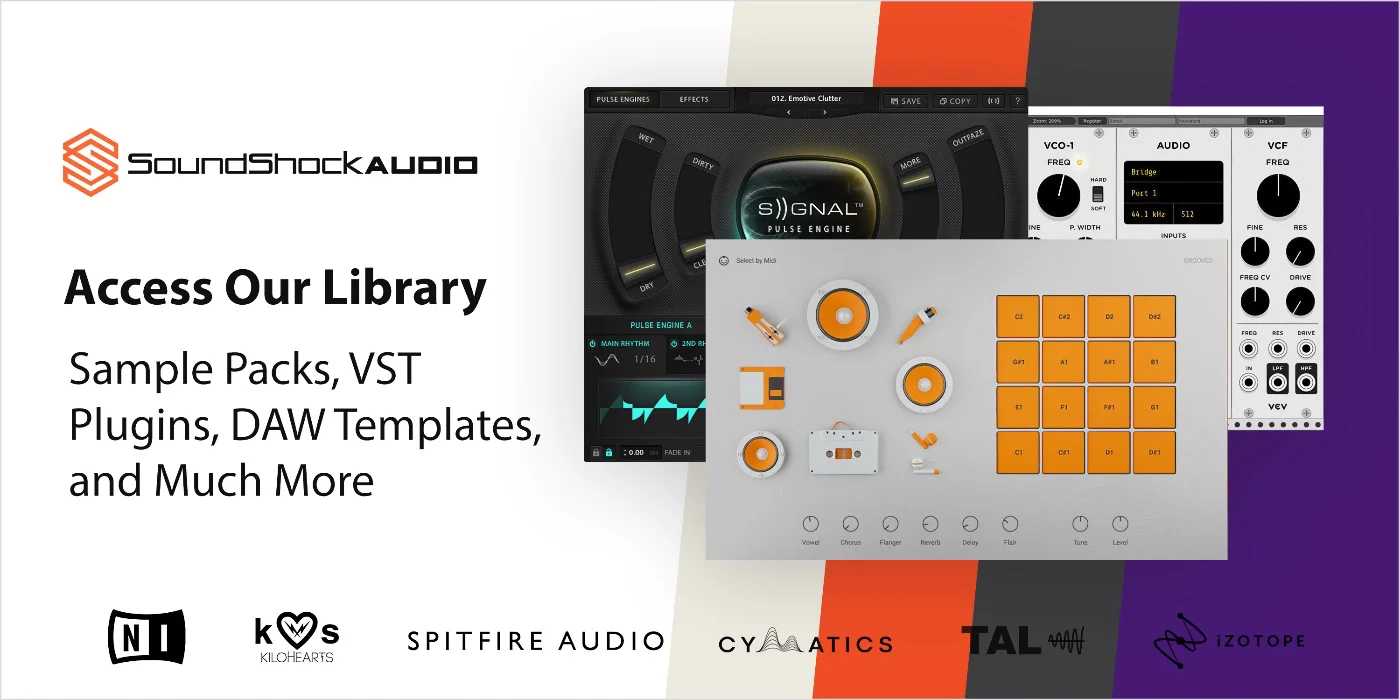
Subscribe to SoundShockAudio and access our extensive library of free music production tools, including Music Production Apps, Sample Packs, and more. Take advantage of our comprehensive tools to create music that truly resonates with your audience.
Need more help when it comes to EQing? Check out these articles:

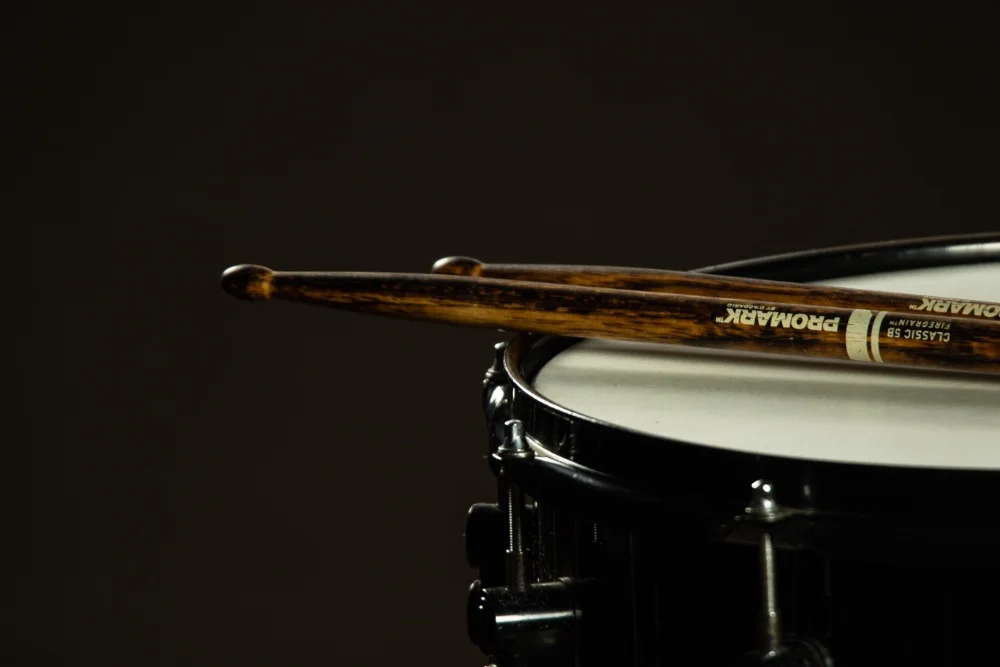


hey, read the part about basic eq techniques for snare drums and was wondering if theres a one-size-fits-all setting? Still tryin to get my head around this eq thing tbh
Hey BeccaTunes, unfortunately, there’s no universal setting since it really depends on the mix and genre. It’s all about experimenting and learning what works best for your sound!
Loved the advanced EQ settings part. Been drumming for 20 years but the transition to production is something else. This info is gold, thanks Daniel.
This article’s a lifesaver, was struggling with snare sounds in my retro tracks. Already see an improvement. Big thanks!
do u guys think the eq plugins recommended here are good for hip hop too, or just rock and pop?
Hey, most EQ plugins are versatile. I’ve used a couple from the list on hip hop tracks; works great. It’s all about how you use them.
Reading up on common EQ mistakes to avoid, made me realize, I’ve been doing a few things wrong all along, thanks for the enlightenment!
Going through the practical exercises to improve snare EQ skills really upped my game. Noticed a big difference in my latest tracks. Cheers!
wondering why my eq adjustments on the snare don’t sound as clear as they should, any ideas on what I might be doing wrong?
Maxi47, it could be a phase issue or maybe you’re over-EQing. Try to use subtractive EQ and check your phase alignment.
always thought eqing was just about making everything louder, really opened my eyes to what it’s actually about, interesting read.